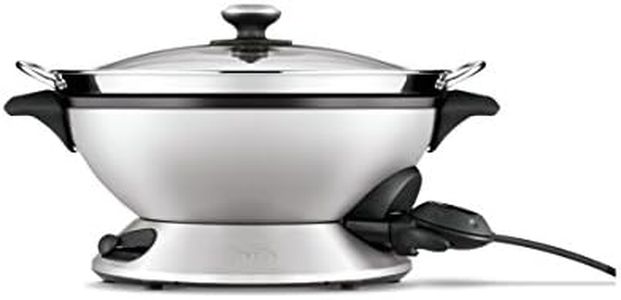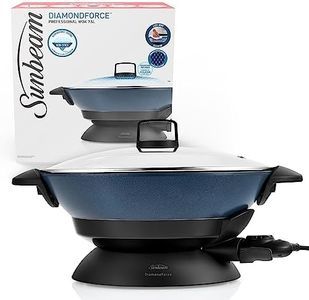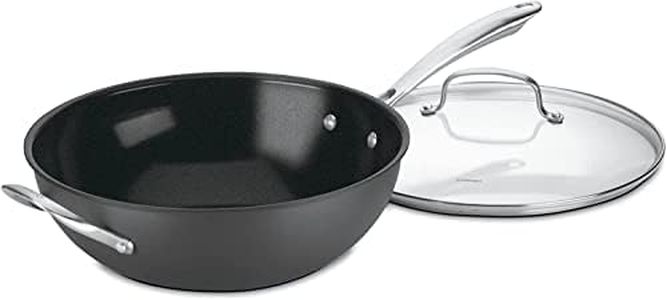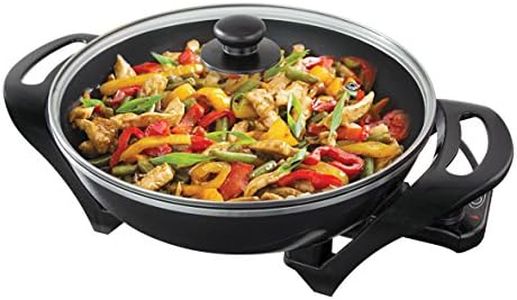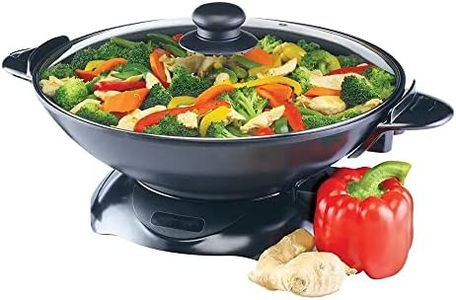We Use CookiesWe use cookies to enhance the security, performance,
functionality and for analytical and promotional activities. By continuing to browse this site you
are agreeing to our privacy policy
7 Best Electric Wok
From leading brands and best sellers available on the web.Buying Guide for the Best Electric Wok
Choosing an electric wok can make stir-frying, sautéing, and other Asian-style dishes much easier and more enjoyable at home. The right model will help you cook more evenly and efficiently, and can even allow you to experiment with different cuisines. When evaluating electric woks, there are a few key features and specifications that can help you decide which one is best for your kitchen and cooking preferences.WattageWattage refers to the power consumption of the electric wok and directly affects how fast and hot the wok can get. Typically, electric woks range from about 1000 to 1800 watts. Lower wattage models heat up more slowly and may not reach the high temperatures needed for authentic stir-frying, making them better for more gentle cooking. Higher wattages heat quickly and provide enough power for searing. Your choice depends on how you plan to use the wok—if you want quick stir-fries and that classic wok hei (smoky flavor), opt for the higher wattage range. If you prefer gentle cooking and stews, lower wattage could be sufficient.
Material and CoatingThe material and coating of the cooking surface affect durability, heat distribution, and ease of cleaning. Common materials are aluminum, stainless steel, and sometimes carbon steel, while coatings can be non-stick or uncoated. Non-stick surfaces are easy to clean and work well for beginners, but they can wear over time. Metal woks without non-stick coatings can offer a more traditional experience and withstand higher temperatures, but require more maintenance to prevent sticking and rust. Choose a non-stick surface for convenience and easy cleanup, especially if you’re new to wok cooking; go for uncoated metal if flavor development and longevity are your priorities and if you’re willing to season and care for it.
Capacity (Volume/Size)Capacity is typically measured in liters or quarts and determines how much food you can cook at one time. Small woks (around 3-4 quarts) are great for individuals or couples; mid-size (around 5-6 quarts) suit small families, while larger woks (7+ quarts) can handle group cooking or batch food prep. Consider your household size and how much food you usually want to prepare—if you entertain guests or have a bigger family, aim for a larger capacity; for solo meals or limited kitchen space, a compact size is more practical.
Temperature ControlsTemperature control refers to how easily you can adjust and maintain the heat during cooking. Some electric woks offer dial controls with several settings, while others have precise temperature displays. More settings or adjustable controls give you greater flexibility for different dishes. If you plan to explore many cooking techniques or want to fine-tune your results, look for a wok with a wide range and easy-to-read/adjust heat controls. If you’ll mostly make similar, simple dishes, a basic control is likely enough.
Shape and DepthThe classic wok shape is round-bottomed and deep, allowing for easy tossing and even heating. Some electric woks offer flatter or shallower designs to increase stability and work better on flat surfaces. Deep, rounded woks are best for stir-frying and tossing ingredients, while shallow or flatter options can be easier to use for steaming or pan-cooking. Think about what dishes you like to make and how comfortable you are with tossing food; for traditional stir-fries and versatility, choose a deeper, rounded wok; for simpler tasks or blending with other cooking, a flatter shape may suffice.
Removable Parts and CleaningSome electric woks have removable bowls or non-electric parts, making them easier to wash and maintain. This is especially helpful if you want to avoid getting the electrical parts wet. If convenience and easy cleanup are important to you, look for a model where the pan lifts out and is dishwasher safe. If you’re okay with hand-washing and a bit more effort, less modular designs would still work.
